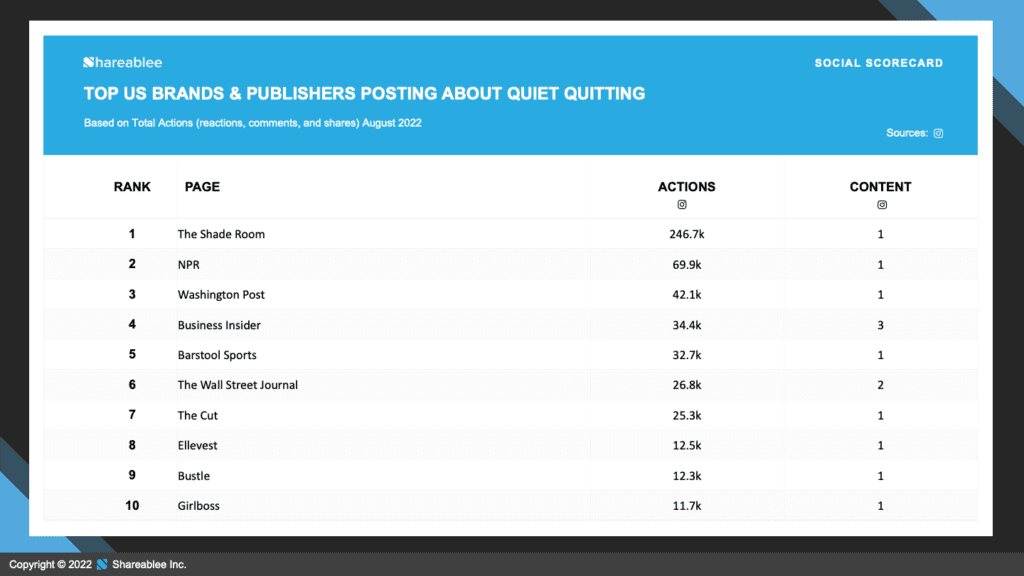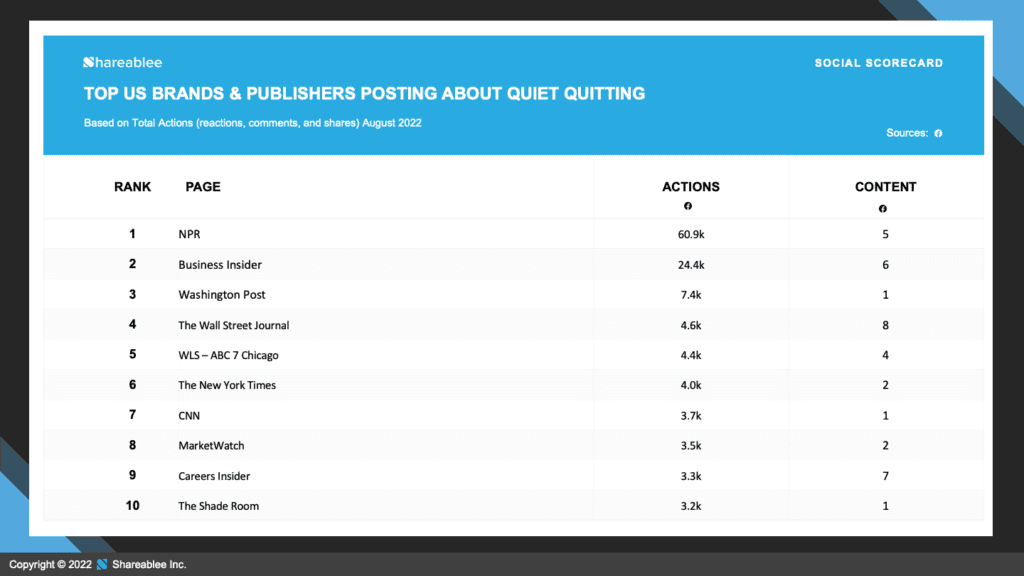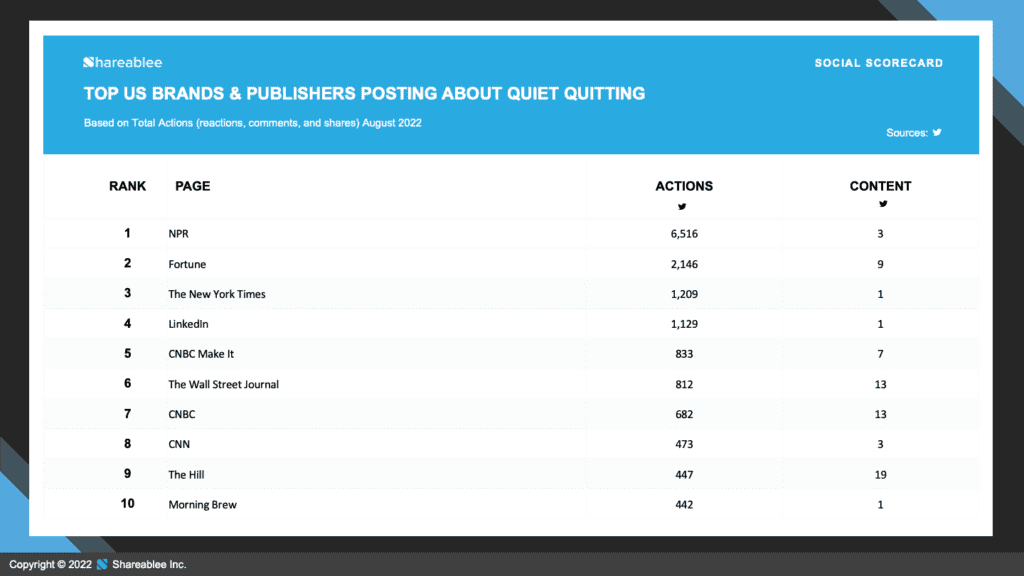
The new term, quiet quitting, means doing the minimum at work. Slacking on the job isn’t new, of course. Yet quiet quitting adds new things to job-sliding, which were born during the pandemic.
One is the boundary-blurring practice of working from home, which resulted in re-evaluating life and professional goals.
Another part of quiet quitting is its social media aspect, since it first went viral on TikTok. As such, we asked Shareablee powered by Comscore to track quiet quitting on social.
While posts mentioning quiet quitting were rare in 2021, in August 2022 the term registered more than 2.1K posts, 1.4 million actions and 1.5 million video views, according to Shareablee. This was a spike even from July 2022, when there were just nine posts and 5.9K actions.
Actions, or consumer engagement, is the sum of likes, shares and comments a post receives.
IG: Most Efficient
The majority of engagement on posts mentioning quiet quitting were on Instagram (69%), followed by Facebook (23%) and Twitter (7%). However, the most content was on Twitter (51%), followed by Facebook (43%) and Instagram (6%), says Madison Busick, a Comscore analyst.
In fact, only two of the top-10 pages on Instagram posted more than once, demonstrating tremendous efficiency.
The Shade Room was by the far the most efficient, with its single post generating over 246k actions. The post defines quiet quitting and its origin

NPR Sees Most Engagement across Platforms
The top-10 pages on Facebook posted somewhat more frequently than those on Instagram, but not by much. NPR, which took top honors in terms of number of actions on both Facebook and Twitter, still saw more engagement on its single Instagram post than it did on its five pieces of content on Facebook, combined. Its posts were tied to the content posted on npr.org.

Twitter is by far the least-efficient platform on the topic of "quiet quitting." NPR averaged 2,172 engagements on its three pieces of content, while the New York Times and LinkedIn, saw 1,209 and 1,129 actions, respectively, on their single posts. The New York Times, similar to NPR and other publishers, posted a link to an article written on the topic, while LinkedIn posted a meme that some questioned for its authenticity, while others simply applauded.

